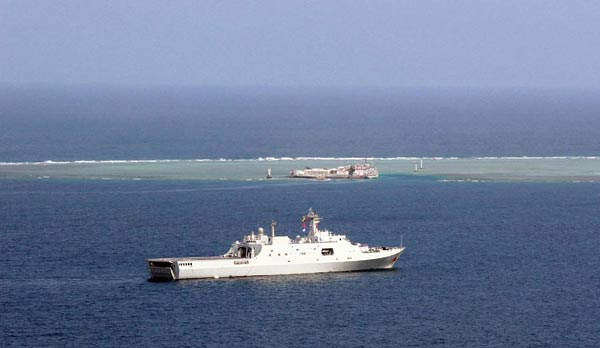 |
|
A formation of the Nanhai Fleet of China's Navy on Saturday finished a three-day patrol of the Nansha islands in the South China Sea. [Photo/Xinhua] |
On May 20, a US surveillance plane flew near some islands in the South China Sea where Chinese workers are engaged in reclamation and construction. A CNN reporter was on the plane, and the media co-released a video with US Department of Defense in which warnings from the Chinese navy requiring them to leave the security alert zone were clear. Comments:
The US has clear intentions behind the overflight, as it has expressed its opposition to China's construction activities on islands and reefs in the South China Sea for a year. However, being unable to halt the work, it is encouraging speculation over the purpose to put pressure on China. The repeated warnings of the Chinese navy further show how "tense" the situation is.
People's Daily, via WeChat, May 23
When US warplanes bombed China's embassy in what was then Yugoslavia in 1999, the US military explained they used an old version of a map, implying they had an inadequate intelligence service. When a US surveillance plane collided with a Chinese fighter plane in 2001, the US military claimed it had no idea how it happened, giving the impression of a flawed chain of command. Can we count on the US government to do something to change its military's obtrusive behavior before any conflict happens in the South China Sea?
guancha.cn, May 21
In both China and the US there is an outdated but popular mode of thinking that interprets every friction as the prelude to a major conflict and encourages firm government, even military, action. This is harmful because cooperation has always been the dominant trend in the relationship between the two countries over the past decade - even when hawks have assumed leading positions in the US, they have avoided talking about war. More mutual tolerance is needed.
Beijing Youth Daily, May 18